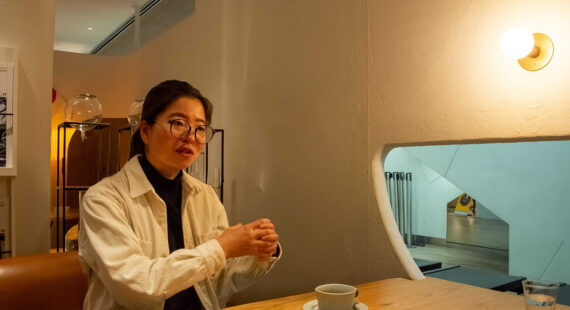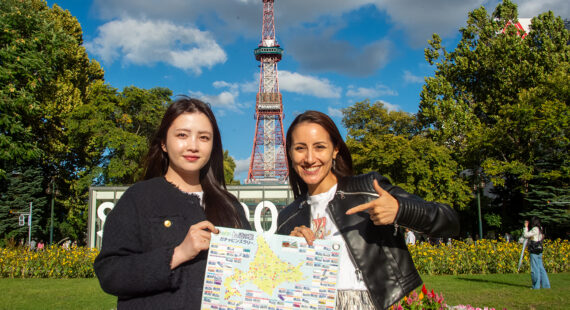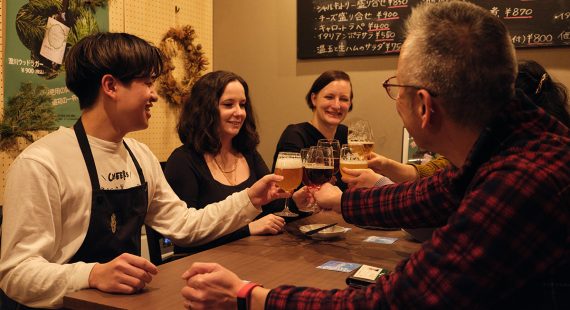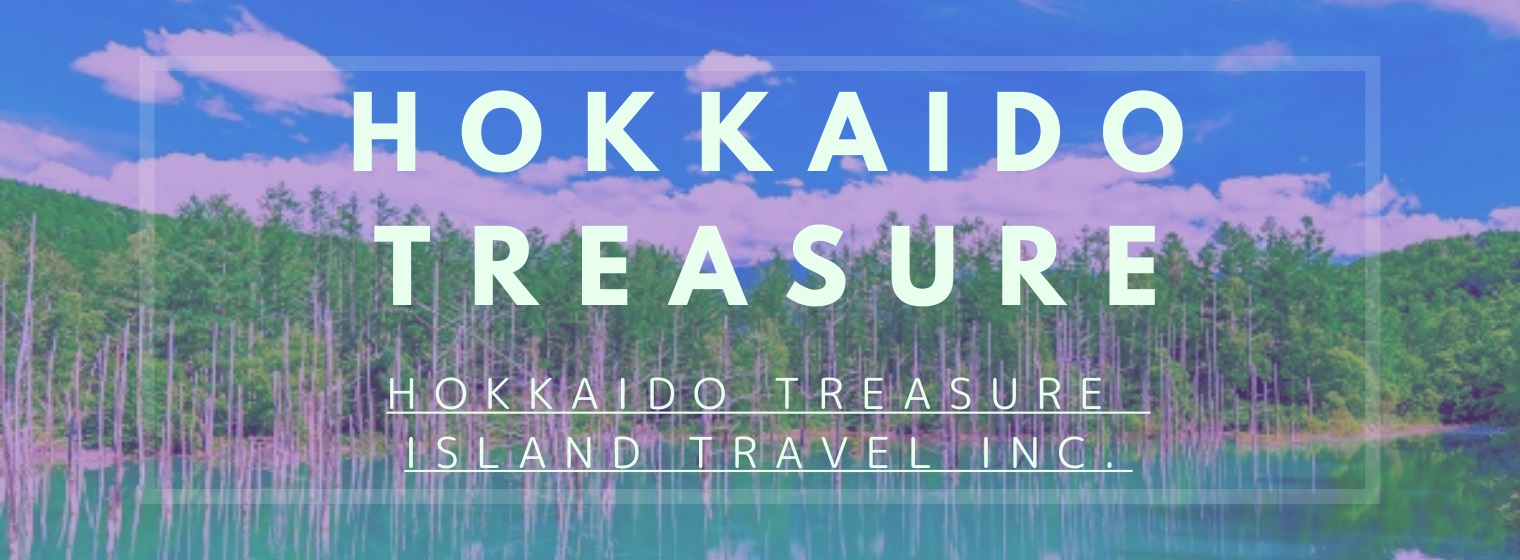The southern part of Hokkaido, the northernmost island of Japan, is famous for such historical cities and towns as Hakodate and Matsumae, but there are many other intriguing travel destinations, too. The smaller towns in the area might not have historical monuments and great cityscapes, but they specialize in what they can offer the visitors the best: adventure travel and sustainable tourism in their bountiful nature. It is, however, difficult for these kinds of small towns to make them known among potential visitors because there are so many other interesting places to see in Hokkaido. A group of three towns—Kuromatsunai, Toyoura, and Oshamambe—joined their forces and formed the Hashikko Alliance to promote themselves.
The Hashikko Alliance aims to develop sustainable tourism in the member towns, provide transportation services in the area, and develop specialty products from local ingredients. Kuromatsunai is a small town famous for its northernmost beech forest in Hokkaido. Toyoura is located east of Kuromatsunai by the Uchiura Bay and being a fishers’ town, it’s known for the delicious scallops the local fishermen catch. Oshamambe is on the west side of Kuromatsunay, and like Toyoura, it’s a fishers’ town with crab as its main catch.
In this blog post, you can read about sustainable tourism in the towns of Hashikko Alliance: Kuromatsunai, Toyoura, and Oshamambe. We introduce the unique travel opportunities and activities these small towns have to offer and give you many ideas to use in your private Hokkaido tour itinerary. Join us as we uncover Hokkaido’s hidden gems of Kuromatsunai, Toyoura, and Oshamambe, and learn about the Hashikko Alliance’s mission to foster mutual exchange and sustainable tourism in the region.
By the way, we have earlier blog posts about Kuromatsunai and Toyoura, so take a look at them if you want to know more about these towns. You can find the blog posts here: Kuromatsunai: The Town of the Beech Forest (our very first blog post!) and Toyoura: The Scallop Town. Another thing you might find interesting is this sample itinerary for SDGs-considerate sustainable tourism and private touring in Hokkaido.
Introduction to the Hasikko Alliance
Hokkaido has several famous must-see tourist attractions that are the staple for almost all visitors to Hokkaido. This means that towns and cities without such tourist magnets need to come up with clever plans to attract visitors. The Hashikko Alliance (はしっこ同盟) was formed between the towns Kuromatsunai, Toyoura, and Oshamambe in 2019 for mutual exchange and to develop sustainable tourism in the member towns, transportation services in the area, and specialty products from local ingredients. In addition, one of the new Shinkansen bullet train stations will be located in Oshamambe, so the towns have also developed plans to make the most of this new wonderful transportation method. The COVID-19 pandemic put the collaboration on halt but now the towns are again proceeding with their plans at full speed. The name of the alliance, hashikko (はしっこ), is Japanese and it means ’edge’ or ’end’ in English. This refers to the locations of the towns in each of their administrative regions: All of the towns are located at the borders or ’edges’ of the subprefectures of Shiribeshi, Iburi, and Oshima, and they are neighboring towns to each other.

To test the sustainable travel itinerary the Hasikko Alliance has developed, they invited a group of people to a 4-day-and-3-night-long monitoring tour in the three towns in november 2022. The participants were able to fully immerse themselves in the rich cultural heritage of these towns and gain first-hand experience of the local way of life through a variety of unique attractions and activities. The tour involved exploring cultural treasures at the former Rebunka Junior High School and joining a fishing boat auction in Toyoura Town, trying out crab rice-making and visiting the railroad village in Oshamambe Town, as well as enjoying a relaxing walk through Utasai beech forest and getting hands-on with soba noodle-making in Kuromatsunai Town—all packed into one amazing day and night in each of these three towns.
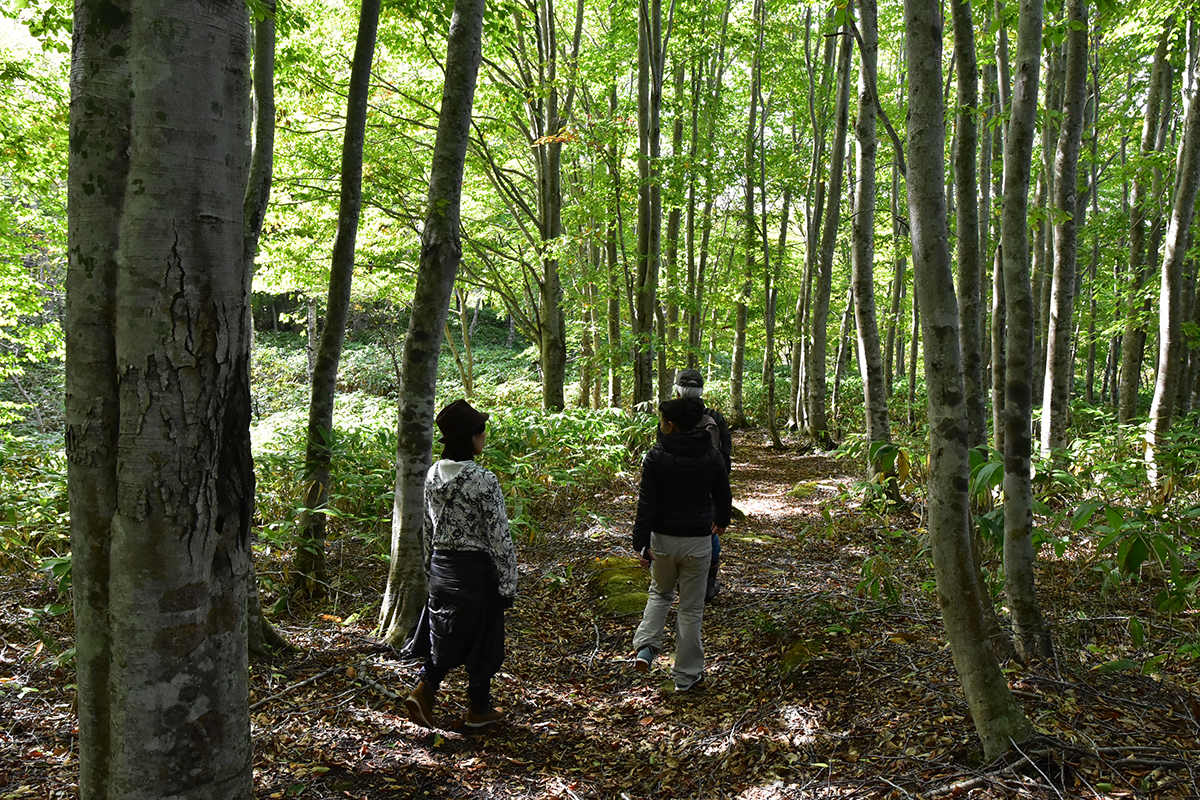
The test monitor tour package received a favorable response from the participants, who praised the diverse range of activities and the immersive cultural experiences offered by the Hashikko Alliance. The monitor participants for example commented that “each of the three towns has different attractions, so you will never get bored during the tour” and “all the meals were delicious and very satisfying”. On the other hand, there were some further suggestions, such as, “it would be nice if there were more opportunities for physical activity.” Based on these comments and suggestions, a tour package was created and it is now available for visitors to enjoy these unique and immersive experiences.
Read on to see our version of the Hasikko Alliance tour package!
Take a refreshing stroll in the beech forest of Kuromatsunai
Kuromatsunai town (黒松内町) (an outbound link, in Japanese only) lies in the southeastern tip of the Shiribeshi (後志) subprefecture. Unlike its partners in the Hashikko Alliance, it has a very short coastline, only 200 meters (about 656 feet). When there is in practice no access to the sea, fishing is out of the question, except in the rivers. Restricted access to the resources that can be found in the sea also makes the main industry in Kuromatsunai agriculture. The most important crop in Kuromatsunai is potatoes but there are also cattle and dairy farms, whose produce is further processed for example into cheese and ice cream. There are about 2,600 inhabitants in the town, which makes it the smallest town in the alliance.

Take also a look at our earlier blog posts about Kuromatsunai. The blog post is titled Kuromatsunai: The Town of the Beech Forest.
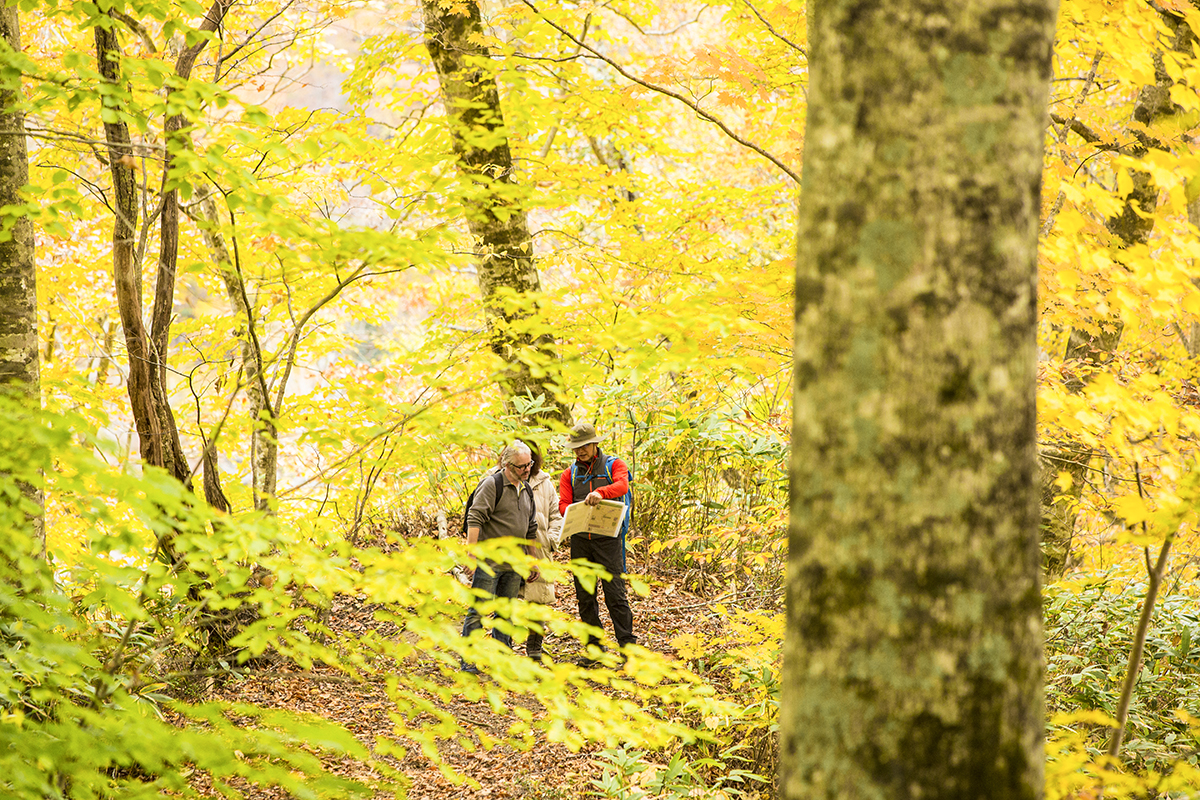
The name of the town comes from the Ainu language—the indigenous Ainu people of Hokkaido and the islands surrounding Hokkaido. It can be interpreted as kurmat ’Japanese woman’ and nay ’river’. In the early times, when Hokkaido was mainly inhabited by Ainu and the Japanese settlers lived in the very southern tip of the island only, there was a rule set by the Japanese shogunate that Japanese women were not allowed to enter Hokkaido (or Ezo as they called it at the time). So, Japanese women were a rare sight for Ainu, and obviously, they were (at least rumored) to be seen at Kuromatsunai, hence the name. Like this, the history of the place names can reveal intriguing pieces of local history.
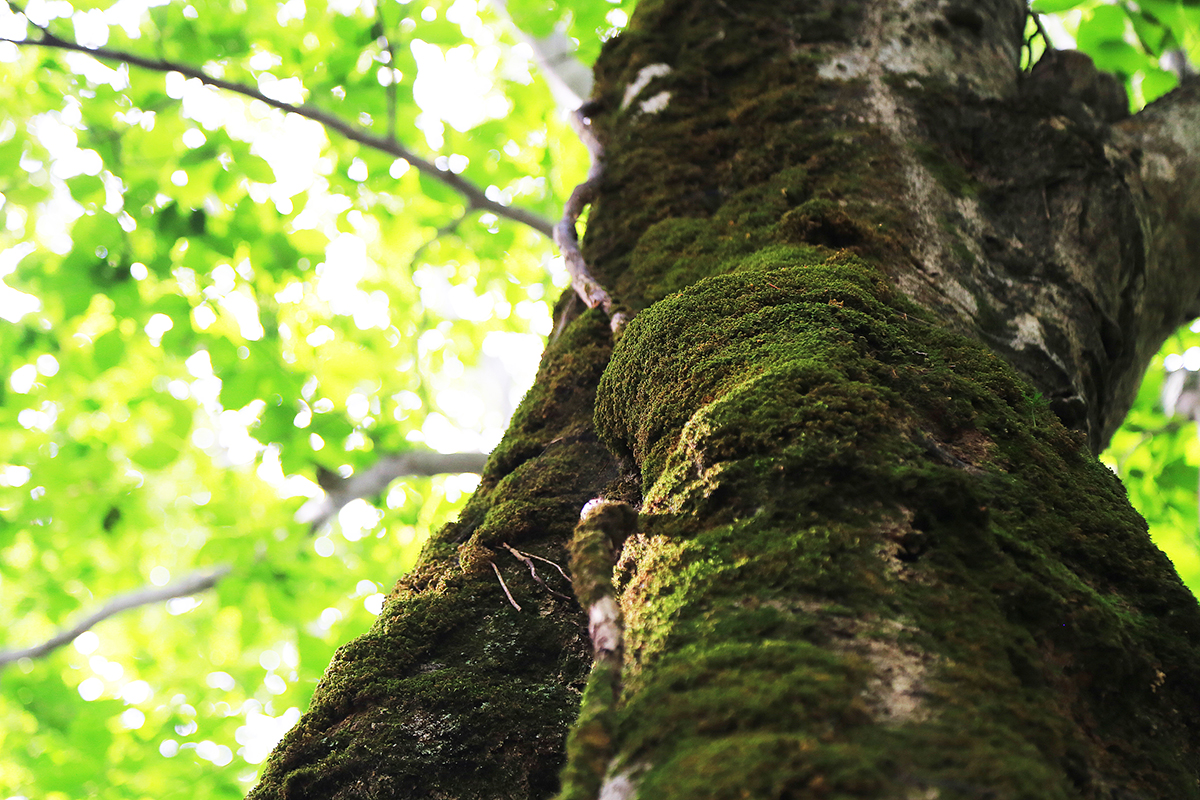

The first activity we recommend in Kuromatsunai is a guided tour of a beech forest. Kuromatsunai is the northern limit for beeches—Siebold’s beeches, to be more precise (buna/ブナ in Japanese)—to grow in large quantities and the town’s beech forest is the northernmost beech forest in Japan. The forest has survived two logging crises after which the locals recognized the value of the forest in the 1980s and started protective actions for the forest. Now the Utasai beech forest (歌才ブナ林) is designated as a national natural treasure and the locals want to raise awareness of this treasure by arranging guided tours in the forest and educating visitors about coexistence with nature while touching the beech trees. You can take part in the guided forest tour during the non-snowy seasons, that is, late spring, summer, and early autumn, each season showing a different wonderful aspect of the forest when the color of the beech leaves turns from the light green of the fresh young leaves into the dark lush green of the summer and then bright yellow and gold of the fall. The knowledgeable local tour guides share their wisdom about the local nature and the forest and show you the best places in the forest. Utasai beech forest in Kuromatsunai is the best place to enjoy, relax, and calm down while observing the nature around you and breathing fresh forest air, or to do ‘forest bathing’ (shinrinyoku/森林浴) as the Japanese call it.
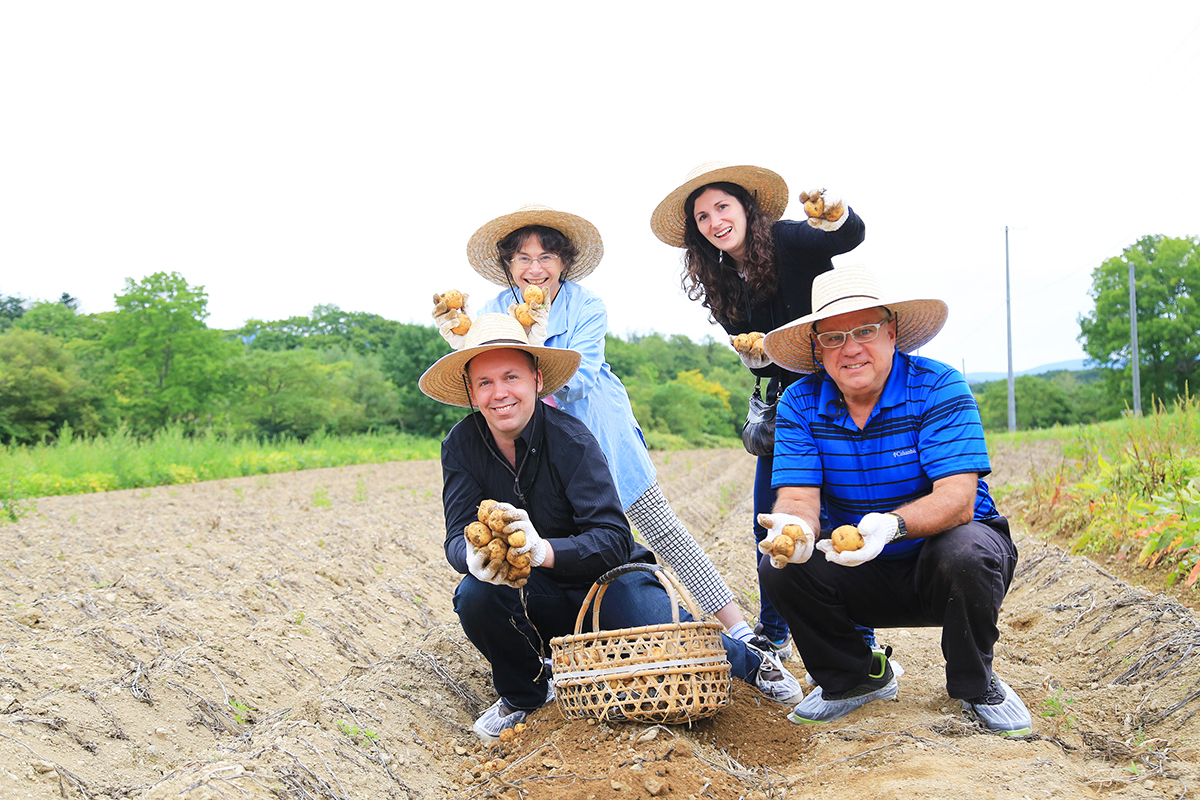
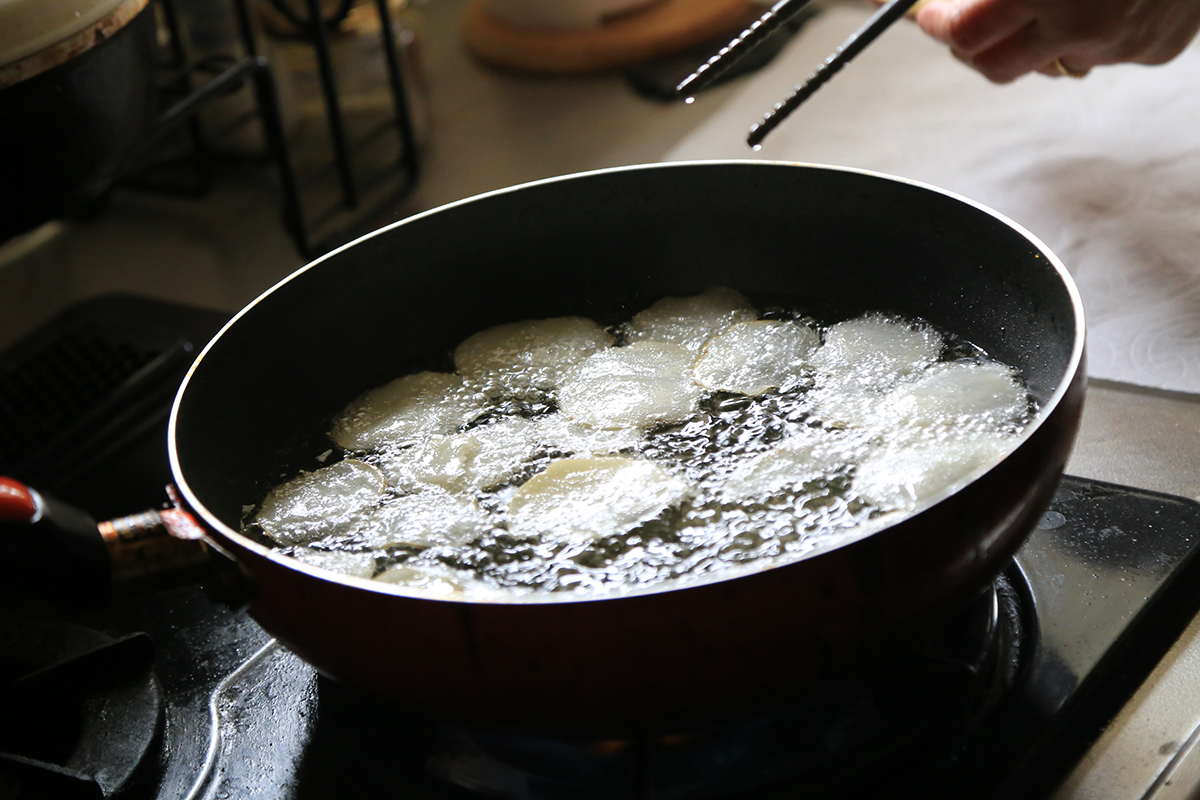

Another interesting way to connect with the locals is to take part in a potato chip-making workshop arranged by one of the town’s farmers. Farm Inn Tomita (ふぁーむいん冨田) was born after the owner of the farm experienced inn-style farming in the U.S in his youth and now the family welcomes visitors from all over the world. The Tomita family hopes that during the workshop visitors can get to know the farmer’s occupation, talk about country life, and enjoy their everyday life in Kuromatsunai while making potato chips with the farm’s potatoes, which the farmers are by the way very proud of. Depending on the season you visit Hokkaido, you might have a chance to harvest yourself the potatoes you’ll be using. This is a real field-to-table experience! Using the kitchen of the Tomita’s house, you can slice the potatoes you harvested and fry them in oil to make homemade potato chips in no time. The freshly made potato chips without any additives are absolutely delicious!
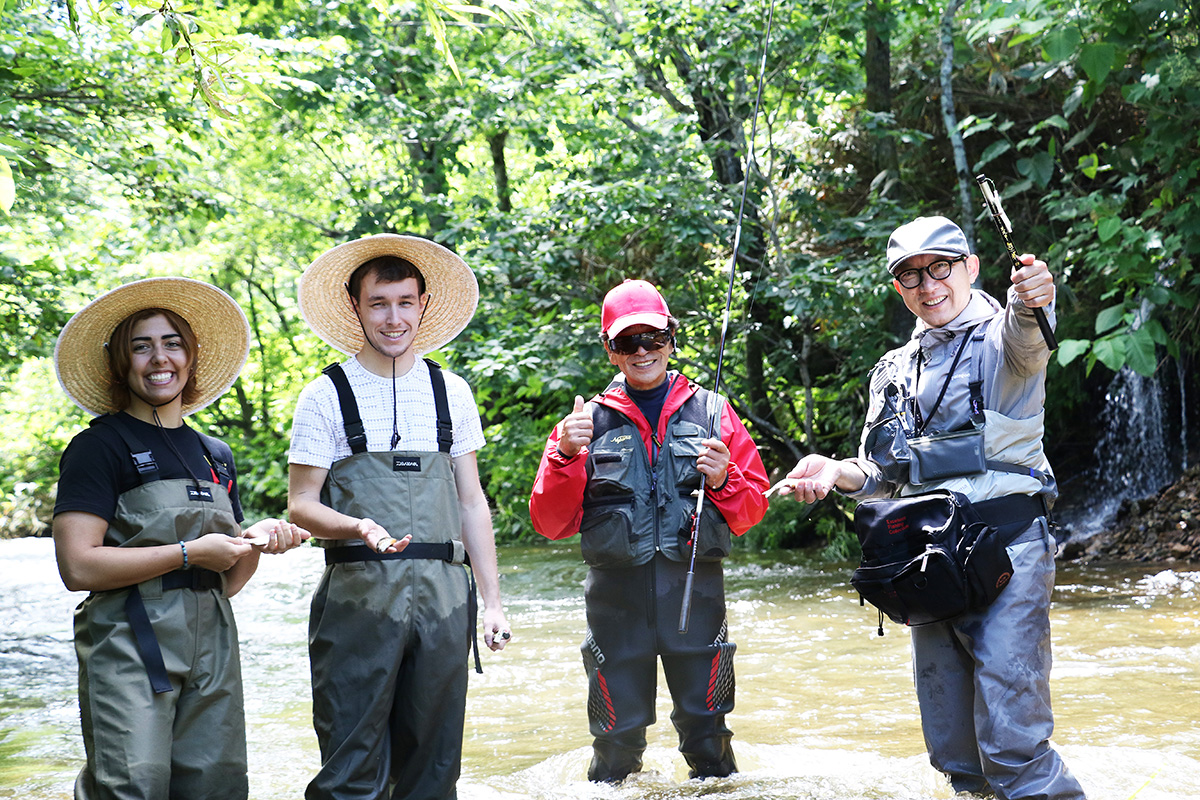

Our final activity recommendation in Kuromatsunai is a sweetfish-fishing experience. Sweetfish, called ayu (鮎) in Japanese, are popular fish in Asian cuisine and are highly appreciated because of their sweet taste that has hints of cucumber and melon flavor. In Hokkaido, they can be found only in the southern part of the island. This fishing experience takes place at the Shubuto River (朱太川), a clear-watered river that runs through the center of Kuromatsunai. In the fishing experience, you will try your hand at a traditional Japanese fishing method called tomozuri (友釣り) in Japanese. This is a live decoy fishing technique that can be a bit tricky to master but don’t worry, the guide will help you with everything, for example, how to put on decoy ayu and capture the fish and where to buy a fishing ticket and decoy ayu. The sweetfish population in the river is protected by rather maintaining the natural spawning grounds than releasing artificially hatched and cultured ayu fry from fisheries. It’s good to keep in mind that this activity is only available during the sweetfish-catching period from the beginning of July to mid-September, so remember that when planning the timing of your trip to Hokkaido.
Indulge yourself with scallops in Toyoura
Toyoura town (豊浦町) (an outbound link, in Japanese only) is located in the westernmost area of Iburi (胆振) subprefecture, at the bottom of the Uchiura Bay. The southern part of the town faces the bay with cliffs and the northern part is criss-crossed by numerous rivers and covered by mountains and forests. There are about 3,500 inhabitants in the town. Toyoura’s economy is driven by agriculture and fishery. Its specialty crops are strawberries and pork. When it comes to the blessings of the sea, Toyoura’s fishers mainly catch scallops and also salmon, flounder, crab, and sea urchins.
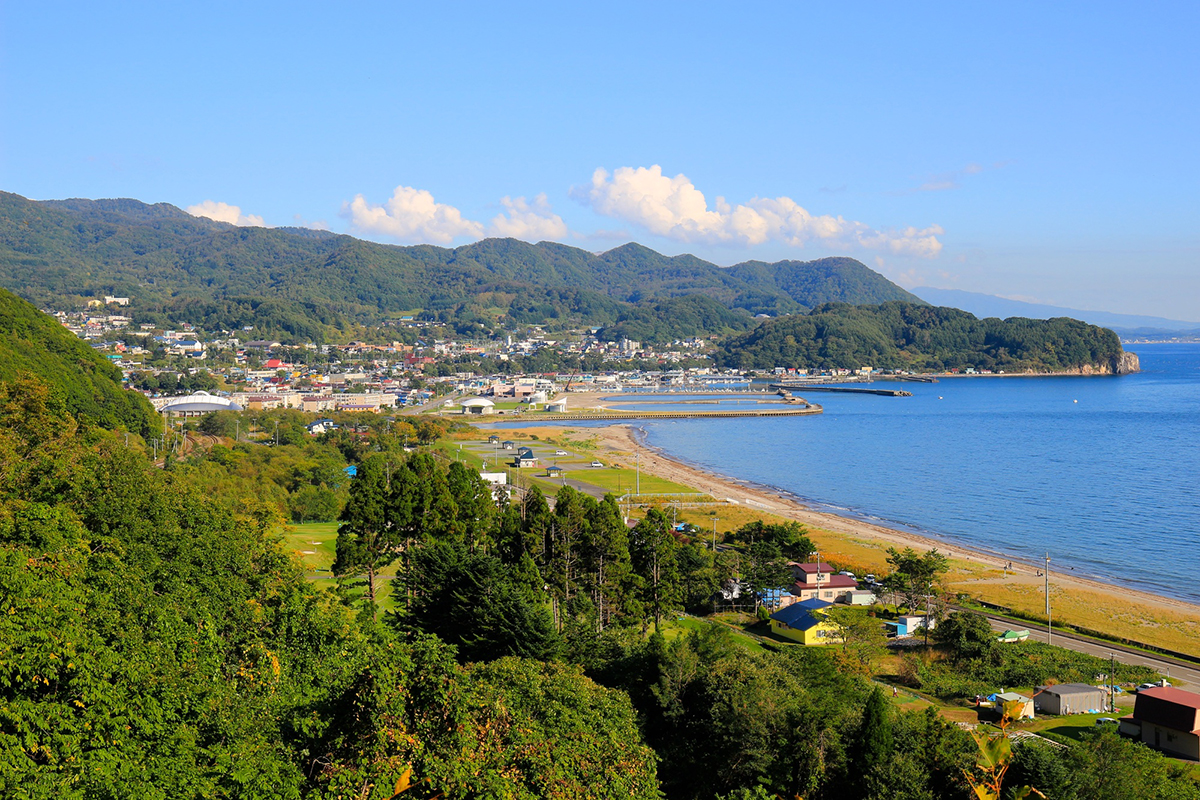
You can read more about Toyoura in our earlier blog post Toyoura: The Scallop Town.
Toyoura is a Japanese place name but the town used to be called with the name Penpe (弁辺 or 辧邊) which comes from the Ainu language. The original Ainu name is a bit unclear but like all the Ainu place names, it describes the local geography. It has been suggested that the original Ainu name was either peunpe ‘a place where there is a lot of water,’ pepenay ‘water water river,’ pepe ‘water water’, or petpet ‘a place where small rivers have gathered’. All these names describe in one way or another the many rivers found in the area. The new Japanese name, Toyoura, was chosen because it describes the flourishing fishing industry of the area: toyo ‘plentiful’ (豊) ura ‘bay’ (浦).
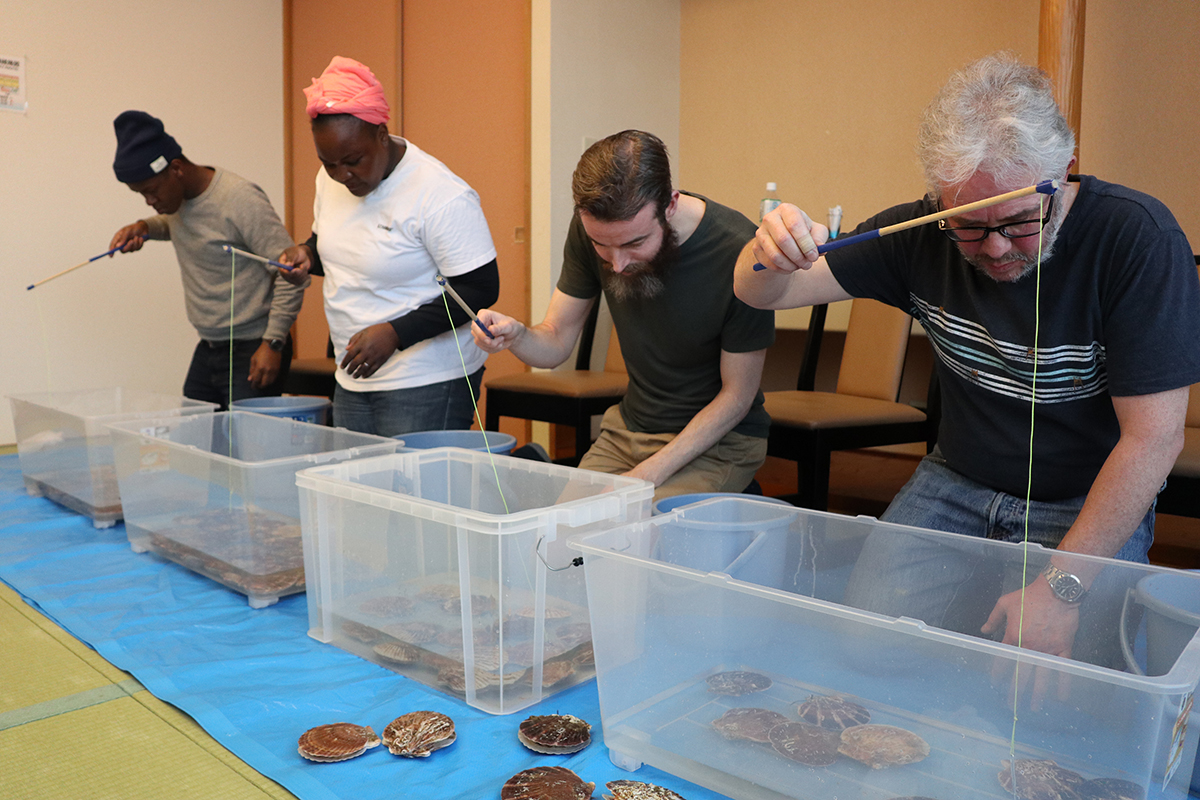

Because Toyoura is especially known for its scallops, we naturally recommend tours and hands-on experiences related to scallops. The scallops are caught and also farmed in the cool waters of Uchiura Bay, sold in auctions, and then exported all around the world. On a scallop tour, you can get to know all about the scallop industry in Toyoura. The participants get a chance to see the actual auction and also “fish” some scallops: live scallops are placed in a bucket of water and the participants try to lure them to take a bait attached to the end of a string. It is said this fun game-like activity originated in Toyoyra. The rules of scallop fishing are very easy to understand, so first-timers, children, and the elderly can participate alike. The town even hosts the Toyoura World Scallop Fishing Championships!
.jpg)
Our second recommendation is a luxury barbeque meal including but not restricted to, some scallops, of course. The chefs, who hail from five-star hotels in Japan and are well-versed in Hokkaido’s ingredients, will provide French-style BBQ cuisine. With the theme of ‘local production for local consumption,’ all ingredients are carefully selected from around Toyoura Town and are in season. The main dish will be venison—a staple food of the indigenous Ainu of Hokkaido—and each dish will be prepared by top chefs. In addition to scallops and venison, the menu includes, for example, salad, pork sausages, and grilled vegetables, all from local ingredients (the menu changes to season).
Enjoy delicious crab meat rice in Oshamambe
Oshamambe town (長万部町) (an outbound link, in Japanese only but with a machine translation option) is located in Oshima (渡島) subprefecture and is the northernmost town in the area. Among the Hashikko Alliance trio, it is the westernmost of the towns. Like Toyoura, it’s located on the shores of Uchiura Bay. With the rich blessings of the sea found in the bay, Oshamambe boasts a plethora of fresh seafood and its main industry is fishery. The town is specialized in crab and scallops. Other main industries in the town are dairy farming and forestry. There a bit more than 4,800 inhabitants in Oshamambe, which makes it a middle-sized town in Hokkaido. Many towns in Hokkaido are aging, but surprisingly many of Oshamambe’s inhabitants are in their twenties. That is because the Hokkaido/Oshamambe campus of the Tokyo University of Science is located in the town and there are of course many students living there.
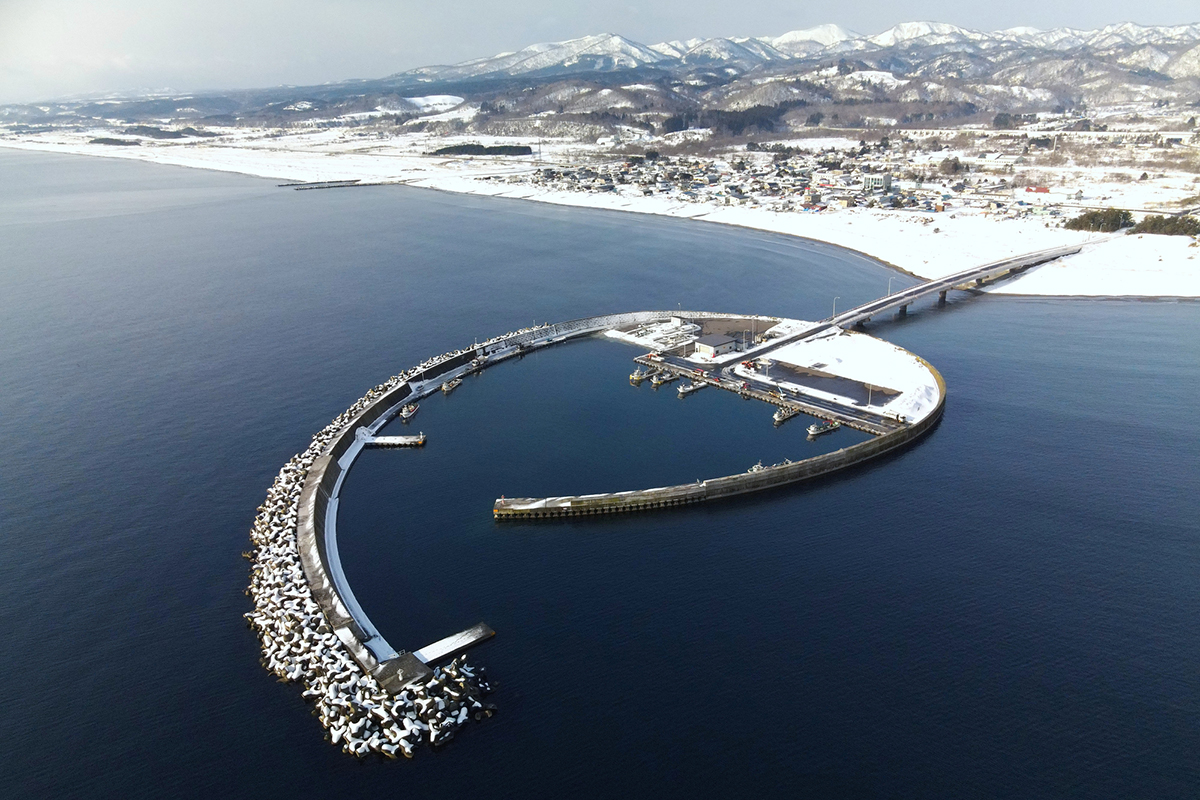
The name of Oshamambe town also comes from the Ainu language. There are three different explanations for the origin’s name: 1) upas ’snow’ samampe ’flounder’ (from a legend about flounder-shaped snowflakes), 2) o ’mouth of the river’ samampe ’flounder’ (one could catch many flounders at the mouth of the Oshamambe river), and 3) o ’mouth of the river’ samam ’lie down’ pet ’river’ (at the mouth of the river, the Oshamambe river flows parallel to the seashore). Judging from these names, it looks like there are or least used to be a lot of flounders in the waters around Oshamambe!
Because Oshamambe is a relatively small town, it’s not packed with many attractions. But the ones you can find there are top-notch! One interesting way to get to know the local history of Oshamambe is to visit the Railway Village (Tetsudomura/鉄道村) in the town’s municipal center (chomin sentaa/町民センター). Being in a junction of several railway lines, Oshamambe flourished as a railroad town in the early Showa period (1926-1989) and it became the major hub of railroads in southern Hokkaido. The Railway Village displays about 300 railway-related items from former Japanese National Railways’ warehouses and donations from local ex-railroad workers, dating back to those days of glory. The motto of the Railway Village is ’see, touch, and move’, so this is an interesting opportunity not only for railway enthusiasts but for anyone to experience old railroad-related items firsthand, for example moving miniature train models. Now Oshamambe JR station is being prepared for the coming Shinkansen bullet train connection, which might return some of the fame as the old-day railroad hub to the town.
Oshamambe is also a favorite destination for onsen hot spring fans, who like to enjoy their baths in a bit quieter environment. There are several onsen bath facilities in Oshamambe, such as Oshamambe onsen (長万部温泉) (an outbound link, in Japanese only) and Futamata onsen (二股ラヂウム温泉) (an outbound link, in Japanese only). A trip to an onsen is the best way to wash away the fatigue of your trip.
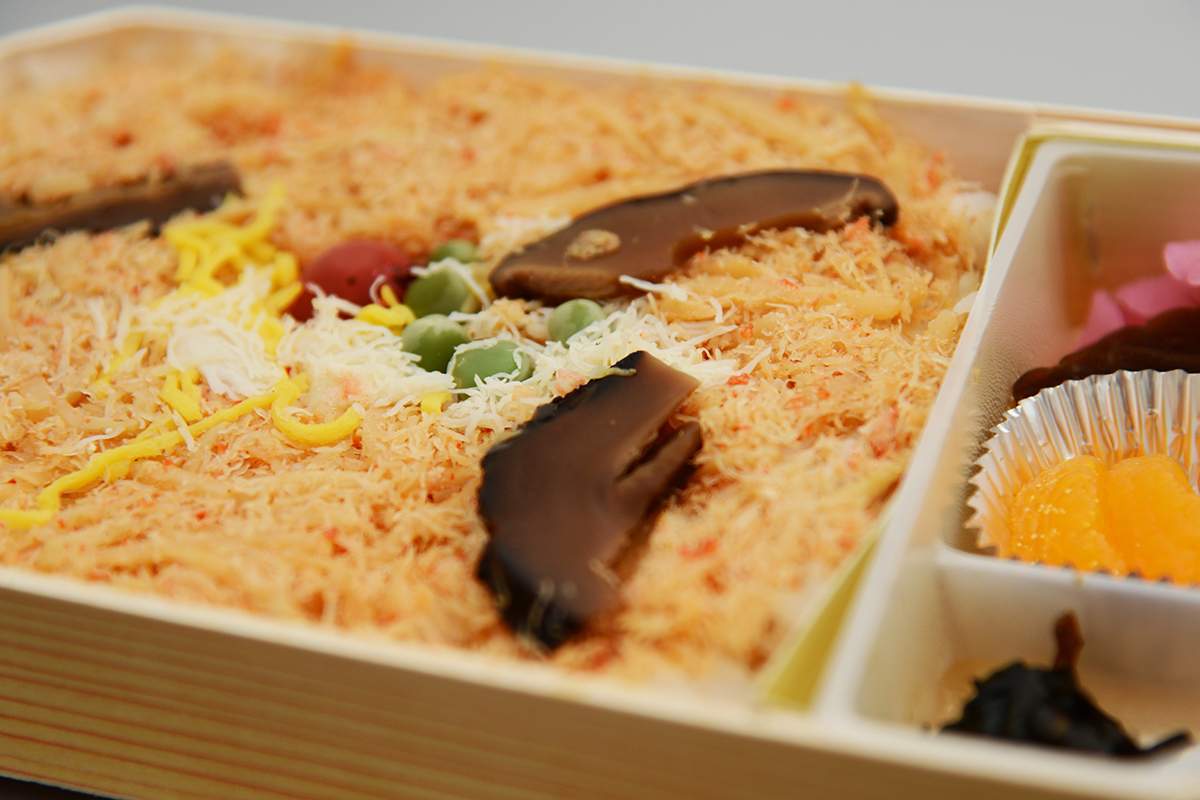
Crab is one of the main catches in Oshamambe and naturally, crab meat is the specialty of the town. Our recommendation for a sustainable traveling activity in Oshamambe is a workshop about cooking your own crab-meat-on-rice meal set called kanimeshi (カニめし) in Japanese. A rice bowl or plate is topped with flaked crab meat, which of course tastes the best eaten immediately. At this workshop, which was started to directly convey the charm and taste of the sea, visitors can learn how to eat and process crab meat in a delicious and fun way that only locals know how to do. This workshop is an excellent chance to get to know the local food culture and also to mingle with the locals.
Kanaya does not only offer workshops but also makes kanimeshi lunch boxes for sale at JR Oshamambe station. The video above is in Japanese, but you can see what kanimeshi looks like and how the experienced Kanaya staff prepares the kanimeshi lunch boxes for sale.
Come and have fun on your private tour engaged in sustainable tourism activities
The UN (an outbound link) defines sustainable tourism as “tourism that takes full account of its current and future economic, social and environmental impacts, addressing the needs of visitors, the industry, the environment and host communities”. The keywords of sustainable tourism are locality, authenticity, environment-friendliness, small in scale, considerate resource consumption, community, and future. As you can see, this is exactly the type of tourism that our recommendations promote. If you are interested in sustainable tourism, you might find our SDGs – Focused Private Tour in Northern Hokkaido itinerary inspirational. Check it out!
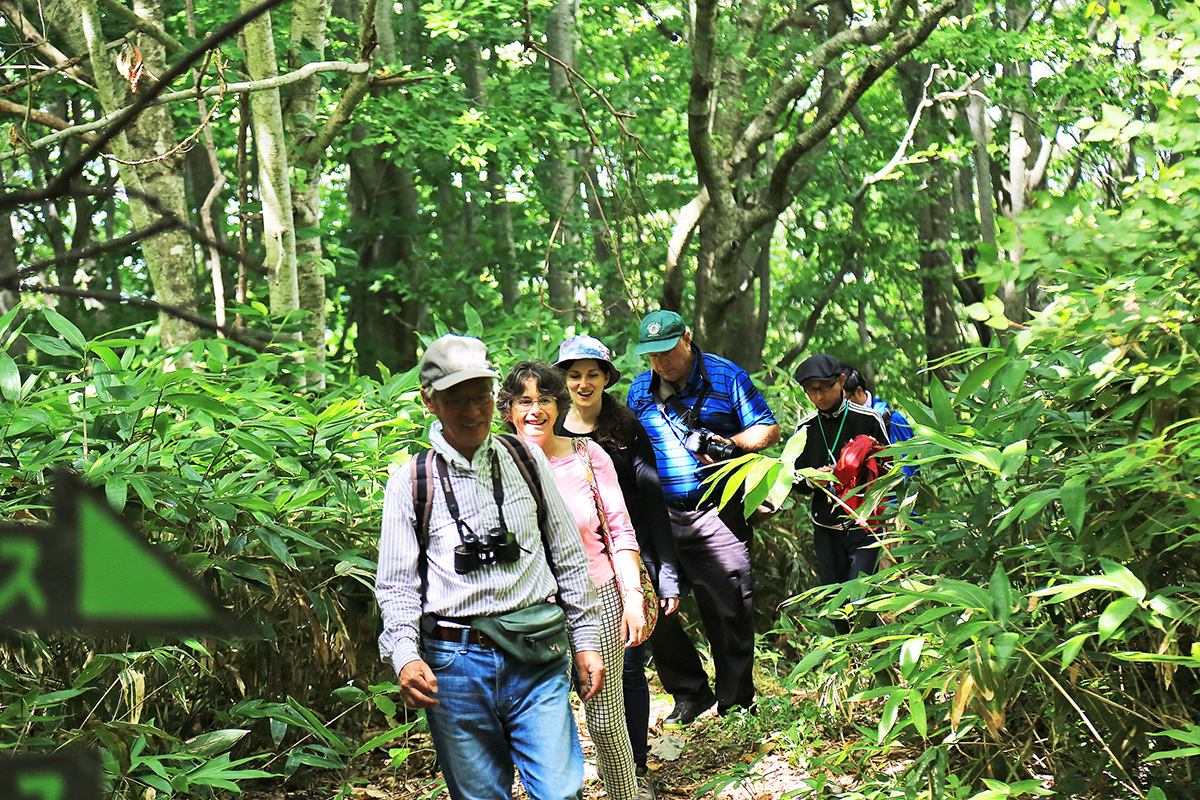
To conclude the blog post, here is a short recap of the activities we recommend. In Kuromatsunai, you can learn about the locally treasured beech forest and experience a relaxing stroll in the forest first-hand. Another way to enjoy nature and local resources is sweetfish catching at the Shubuto River, of course in a responsible manner, so that the fish population is protected. In addition, you can have cultural exchange with the community members by participating in a potato chip workshop. In Toyoura, you can learn about the local industry on a scallop tour and indulge yourself with locally produced delicacies at a barbeque party. Finally, in Oshamambe you can learn about the local history and food culture by visiting the Railway Village and making the town’s specialty kanimeshi yourself.
If you want to know more about these sustainable tourism destinations, want to plan your private tour itinerary in Hokkaido, or want to make a reservation for a sustainable tour, we are here for you! Just click on the ’Contact us’ button below and we can start to plan your dream itinerary in Hokkaido.
